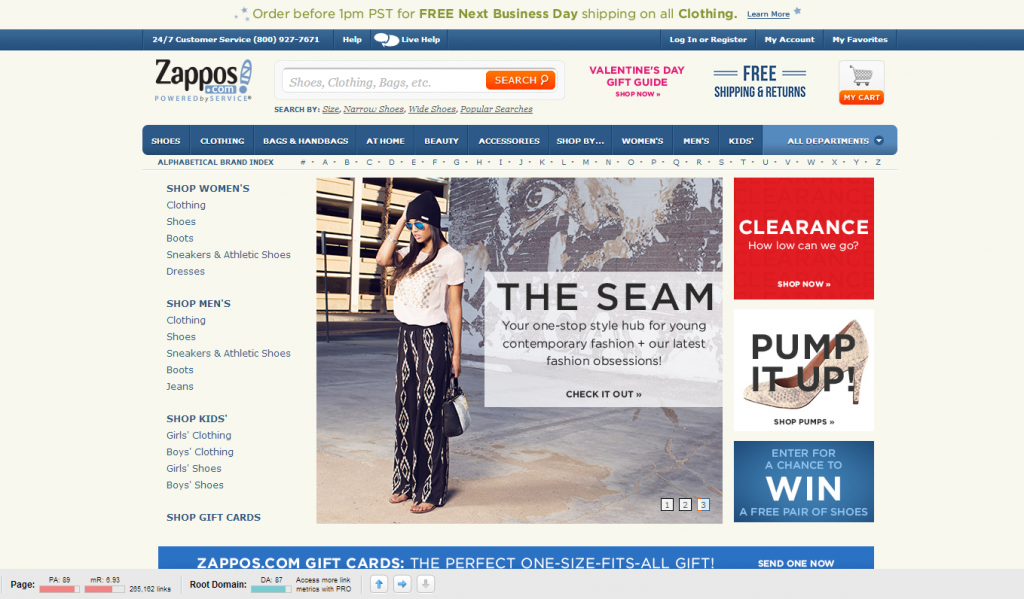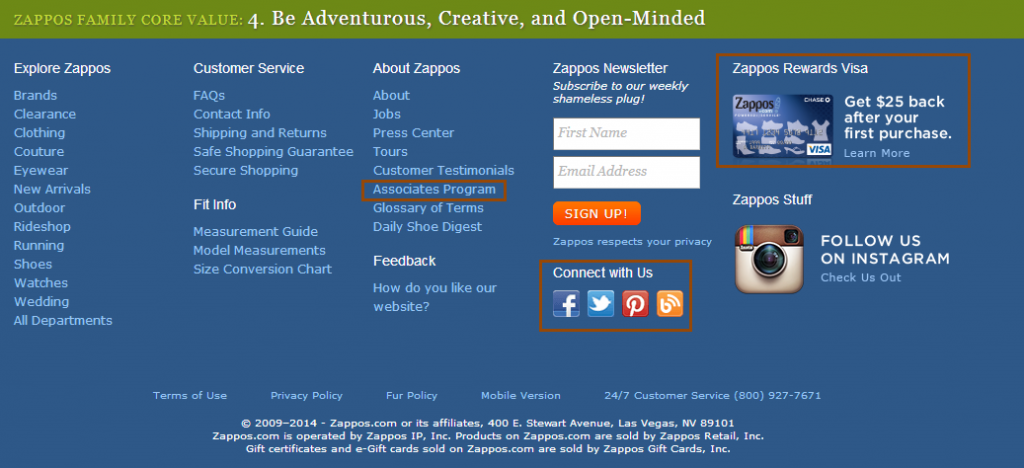Running an online business without clear goals in mind is like climbing Mount Everest without proper gear and training. In short, you are doomed to fail in both cases.
In this article I explain about macro and micro goal setting and why it wouldn’t be smart to concentrate on just one particular goal or conversion. Furthermore I dive into Zappos.com to provide you with a case study example.
Are you ready to set you goals?
Definition of Macro and Micro Goals
Last year I wrote a post about how to set up goals in Google Analytics. If you are working with Google Analytics, it is a must read!
Every website is online for a reason, at least it should be. The primary goal / conversion on a website is called a “macro goal” or “macro conversion”. From now on I will name it a “goal”. This could be making a purchase, opening a forum account, making a dealer appointment etc.
However, most often websites exist for more than one reason. The secondary goals of a website are called “micro goals”. Think about downloading a brochure, watching a demo and asking for more information.
I haven’t been in a situation yet where I couldn’t come up with a list of micro goals besides the macro goal.
Why You Need Them Both
“Why is measuring and optimizing on selling cars not enough?” Very often I have to deal with these types of questions. But you know what, that’s ok. It keeps me going!
As you might know, not every website visitor is going to buy your products or wants to use your services. You could classify “people” on the web in three groups:
- Buyers; there is a high chance that a person in this group will buy your product
- Searchers; there is a medium chance that a person in this group will buy your product
- Browsers; there is a low chance that a person in this group will buy your product
Guess what, it is possible to satisfy most people in every group with one website:
- A buyer needs a good website experience and a product that fits
- A searcher likes to compare products from you with other competitors that are out there
- A browser is looking for good information on a particular topic or product, but is not likely to buy (yet)
By only focussing on the sale, there is a good chance you will disappoint “searchers” and “browsers”. Eventually this will lead to a lower Conversion Rate for your primary website goal.
Four Benefits of setting Micro Goals
- Your focus will be broader than only your primary website goal
- You can positively impact your primary goal if you satisfy all the needs of your website visitors
- You can develop a multi-channel strategy that involves both macro and micro goals
- Your focus will be broader than clickstream data and this makes your life and job more challenging and rewarding
Ready to take your online business to the next level?
Zappos Goals Case Study
Have you heard about Zappos.com? Well, nowadays they are pretty succesful online. The CEO, Tony Hsieh, has guided them from literally zero money to a multibillion company. His book is a great read!
Zappos Macro Goal
Besides talking to Zappos’ stakeholders, a website quick scan is the first thing that comes to my mind when defining their macro and micro goals.
Let’s start with looking at their homepage:
On purpose I have copied the Moz Toolbar as well.
Wow, look at their figures: PA = 87 and DA = 89. It already tells me they are a very reputable brand.
And I can immediately see they are an ecommerce site willing me to buy their products. For this company to grow, they need to make sustainable profits and that’s why their main goal will be related to selling products.
However, based on the content and design of the homepage, for me their macro goal is growing their clients’ base. Selling more products is automatically related to growing their number of clients. In this case we could define two or three related macro goals.
Zappos Micro Goals
Before I can define a number of micro goals, I need to take a closer look at their homepage:
I have highlighted some areas with the color brown. A few possible micro goals are:
- Setting up new account: great, a new customer for Zappos.
- Accessing “my account”: it shows there is some activity going on.
- Accessing “my favorites”: this might lead to another sale.
- Contest for winning “free shoes”: Zappos is building their brand and customer loyalty.
- Zappos.com gift cards: it directly leads to extra revenue and maybe a new customer.
Already quite some micro goals to consider! Let’s take another look at their website, but this time the bottom of their homepage:
A few more interesting things are visible here:
- Cashback after first purchase: a great way to acquire new clients. Not really a goal by itself, but very useful for sure.
- Associates Program: expanding their reach with new affiliates promoting their products.
- Connect via Social: communicate with their fans and useful to quickly answer questions or solve issues.
In short, only by looking at their homepage, they do a really good job by “using” their satisfied customers / affiliates to promote their brand. I feel “free marketing” is a very important asset of this company.
I am sure that diving deeper into their website would lead to many more goals worth mentioning.
If you might wonder, I am in no way affiliated with Zappos.com. Just thought about this company for my case study, that’s it. :-)
Conclusion
Be sure to take a broad approach when defining your website goals. By doing this there is more to optimize for and it is easier to gain trust from your website visitors. This will eventually take your business to a higher level.
I hope this article will guide you in defining your macro and micro goals. Good luck and do let me know if you have any questions about this topic!
One last thing... Make sure to get my automated Google Analytics 4 Audit Tool. It contains 30 key health checks on the GA4 Setup.



Paul,
As a recent reader of yours, I have to tell you how much I’m enjoying your resource articles, especially this one. They’re succinct and actionable which is more than I can say for the majority of resources I run into. I most enjoy the tone they’re written in. It feels friendly and not forced.
I help build campaigns at a startup agency so this article, in particular, is helping me create a measurement plan that stems from the overall business goals we’ve set up for each client.
Thanks again, man
All the best.
Hi Alex,
Thanks for your comment, I really appreciate it!
In addition you might want to check out this article then:
https://online-metrics.com/analytics-goals/
I believe it will be a great help for you as well.
Best,
Paul
If we only focus on the users that convert, then we will miss many useful data of non-converting users! Each type of people can be satisfied within one website. But in my opinion, as a startup business, we can focus on one type of specific people which is most likely to convert.
Micro goals should be planned and defined in advanced!
Thank you, Paul.
You are right Melody, it’s better to target a specific niche instead of trying to reach everyone and reaching no one.
The sooner you define your goals the better.
Hello Paul, I defined the following micro goals for my e-commerce website. Is it actionable? All should be set as event goals in GA, right?
email subscribe
add to cart
add to wishlist
buy button hit
search bar hit
check review
chat with us
Category page views for that product set
Page Views Per Visit
Take a phone call
sign in an account
social share
View return policy >5 s
Best regards,
This is a great starting point. You can always modify the list a bit later, based on new insights.
Further, whether each of these are event or destination goals depends on your measurement plan. For example, “email subscribe” and “sign in an account” could be a destination-based goal when these are on a unique URL.
It’s best to interpret most of these goals in context of your macro goal(s) or other micro goals. “Page Views per visit” doesn’t say a lot on it’s own.